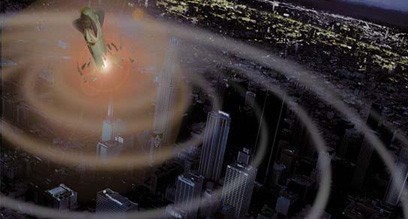The United Kingdom’s Defence (sic) Secretary Phillip Hammond, scheduled to speak at the third Electric Infrastructure and Security Council (EIS) Summit, is expected to highlight vulnerabilities of Britain’s current defense and commercial infrastructure to electro-magnetic pulse bombs.
Destructive EMPs can come from a variety of sources — specialized bombs/weapons, nuclear strikes in the atmosphere, and even naturally occurring phenomena, such as solar flares. The UK defense official first raised the EMP issue several months ago, and the government has since responded with an analysis warning of a “known and significant” risk to sensitive sectors such as satellite communications and the nation’s power grid.
The UK is determined to go beyond “conventional” technologies in preparing for EMPs. of primary concern is not only potential terrorist strikes, but also a repeat of 1859’s Carrington Event — a massive solar storm which knocked out the telegraph system. Experts say a solar storm of that magnitude could leave a large portion of modern electronic devices fried if it were to occur today.
The U.S. is also nervously eyeing the prospect of a massive terrorist or naturally-occurring EMP event. Comments Avi Schnurr, the chief executive officer of the US Electric Infrastructure and Security Council (EIS) and a White House adviser on the issue, “We are beginning to realise that, unfortunately, all our societal eggs are in one fragile electric basket, and we are not sufficiently protecting ourselves. We have become potential victims of our own technical advancement. The evolution of national electric grids and key infrastructure components means that we are more vulnerable to EMP than ever before.”
His UK counterpart says a key obstacle is convincing the public to pay extra taxes or divert money from current programs in order to beef up infrastructure to withstand EMP and to invest in space-based efforts to detect solar storms before they strike. One such effort is the €2.54 million European Union SPACECAST project, which aims to make government solar weather data available to private satellite operators.
While expensive, such projects could allow for power grids to undergo protective shutdowns in the event of a catastrophic solar storm, and could allow satellites to undergo automated shutdowns in an attempt to ride out the storm. Such precautions could prevent millions — if not billions — in damage to vital communicates satellites.
Sources: UK Parliament, Telegraph
 Conspiracy Plot
Conspiracy Plot


